Yueyang Tower: A Journey Through History and Culture on Junshan Island
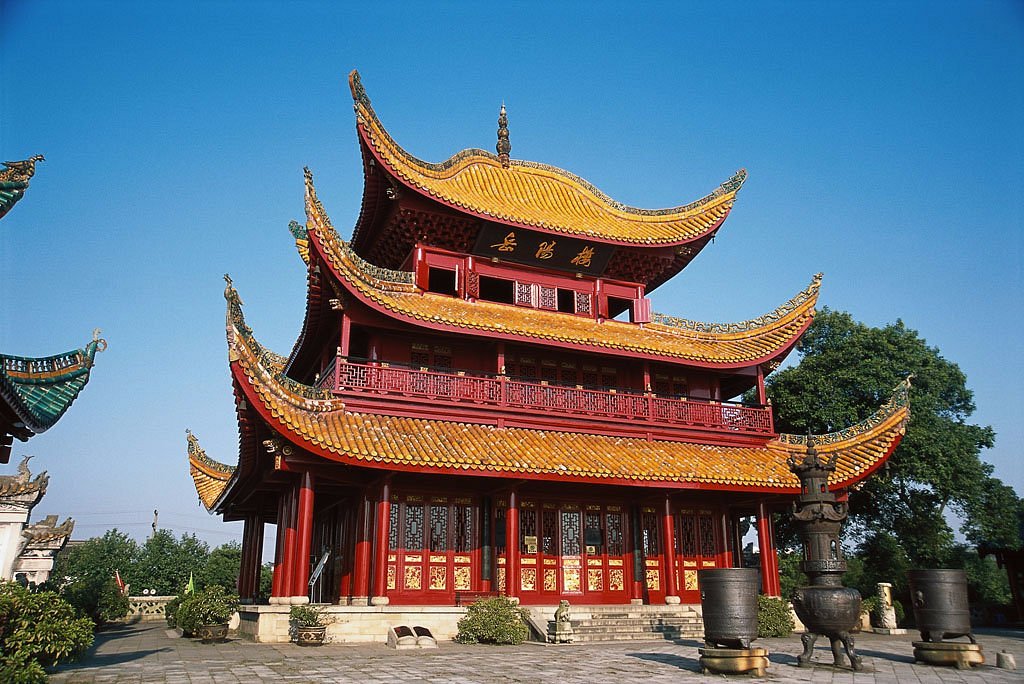
An Essential Guide to Visiting Yueyang Tower Junshan Island
In This Guide
- An Essential Guide to Visiting Yueyang Tower Junshan Island
- The Rich History and Legends of Yueyang Tower Junshan Island
- Main Highlights: What You Absolutely Can’t Miss
- Planning Your Visit: A Practical Guide
- Tickets: Prices, Booking, and Tips
- How to Get There: A Complete Transportation Guide
- Local Cuisine and Accommodation Nearby
- Frequently Asked Questions
- Final Thoughts on Your Trip
Discovering the Splendor of Yueyang Tower and Junshan Island
Nestled in the heart of Hunan Province, Yueyang is a city steeped in over 2,500 years of history, offering a mesmerizing blend of ancient architecture and breathtaking natural landscapes. At the forefront of this cultural treasure trove are two iconic sites: Yueyang Tower (Yueyang Lou) and Junshan Island. These landmarks encapsulate the essence of Chinese heritage, drawing visitors not only for their historical significance but also for their stunning views and tranquil surroundings.
As you embark on your journey to Yueyang, be prepared to be enchanted by the Yueyang Tower, a wooden wonder that stands as a testament to ancient Chinese craftsmanship. Originally constructed during the Tang Dynasty, this three-story pavilion offers sweeping vistas of Dongting Lake, where the waters reflect the ever-changing hues of the sky. The tower has inspired countless poets, including the great Du Fu, whose verses capture the profound connection between nature and human emotion.
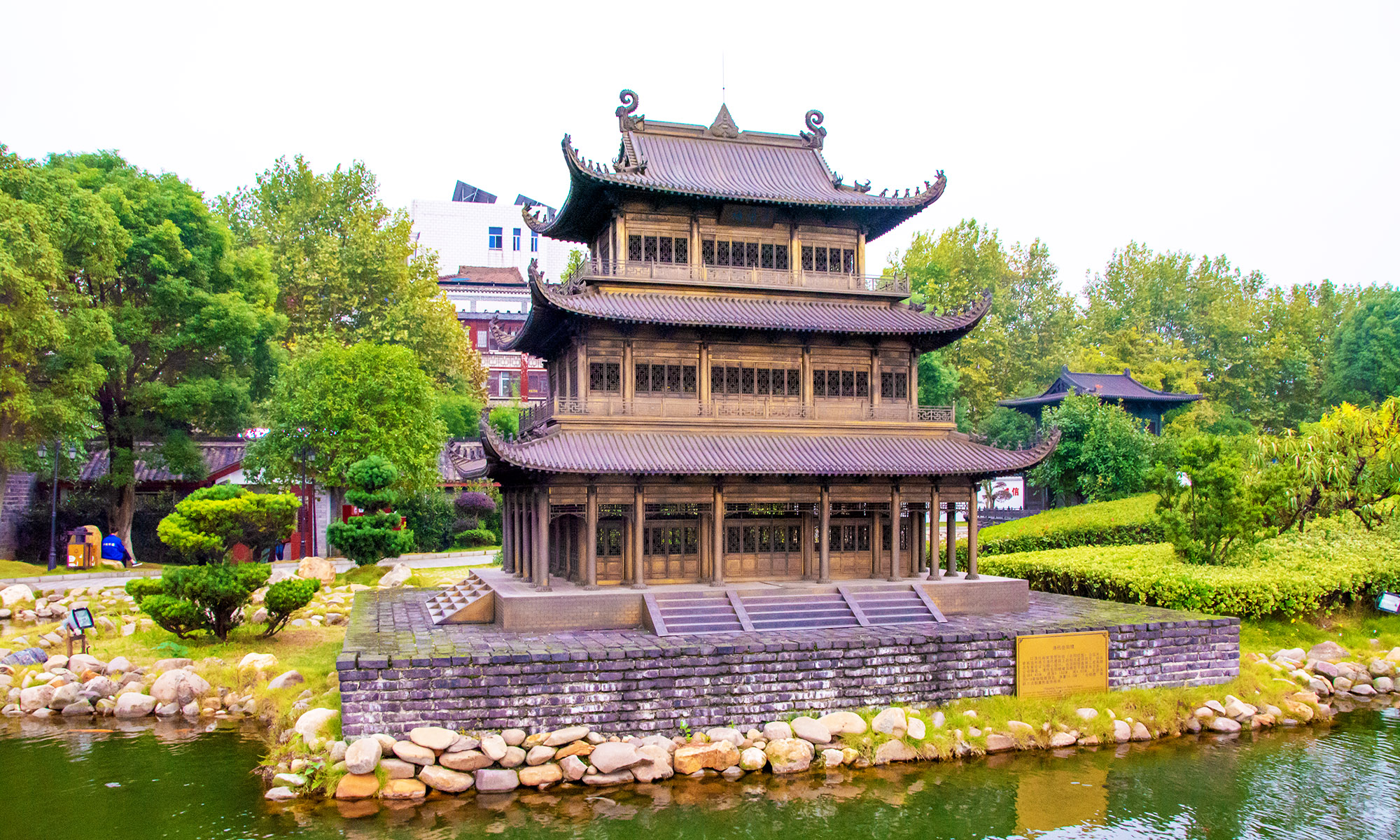
Yueyang Tower Junshan Island.
Just a stone’s throw away lies Junshan Island, an idyllic retreat that invites exploration amidst lush greenery and serene landscapes. Known for its rich soil and favorable climate, the island is celebrated for producing Junshan Yinzhen Tea, a prized green tea that has earned acclaim both domestically and internationally. Visitors can wander through quaint pavilions, ancestral temples, and lush tea gardens, or sample the local delicacies while soaking in the peaceful ambiance that surrounds them.
Whether you’re a history buff, a nature lover, or simply seeking a moment of tranquility, the combination of Yueyang Tower and Junshan Island promises a unique experience steeped in the beauty and richness of Chinese culture. Join us as we delve deeper into what makes these destinations essential stops on your journey through China.
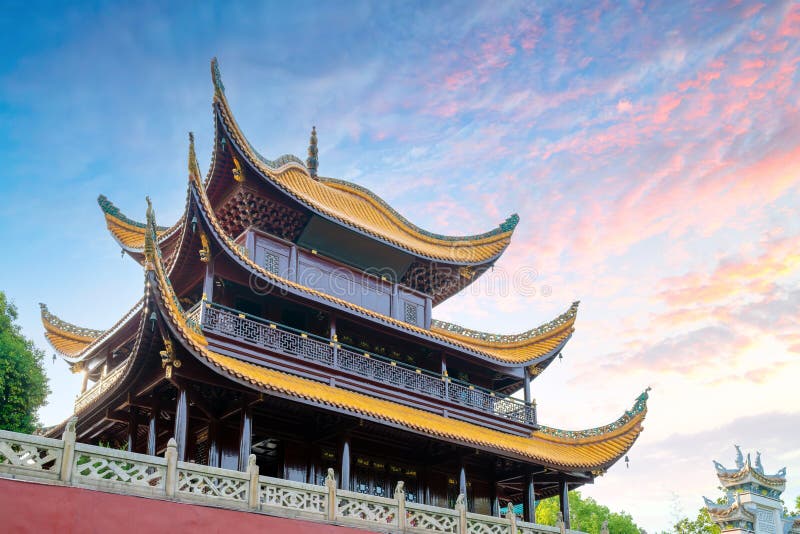
Yueyang Tower Junshan Island.
The Rich History and Legends of Yueyang Tower Junshan Island
The Rich History and Legends of Yueyang Tower and Junshan Island
Nestled alongside the shimmering Dongting Lake, Yueyang Tower and Junshan Island stand as monumental testaments to China’s rich history and cultural tapestry. This remarkable site not only showcases stunning architecture and picturesque views but also envelops visitors in tales of legendary figures and ancient traditions.
The Tower’s Historical Significance
Yueyang Tower, known in Mandarin as Yueyang Lou (岳阳楼), boasts a storied past that dates back to 716 A.D. during the Tang Dynasty. Positioned on the southern side of Mount Tianyue, this iconic structure was originally built to commemorate fallen soldiers from the State of Ba, who fought valiantly in the Warring States Period (403-221 B.C.). Over the centuries, it has undergone numerous reconstructions, each adding layers to its historical narrative. The current wooden structure, standing 19 meters tall with a unique design featuring four massive nanmu wood pillars, is a marvel of ancient engineering, constructed without a single nail.

Yueyang Tower Junshan Island.
A Canvas for Poets
The tower has long been a muse for poets and scholars, with its stunning vistas inspiring verses that resonate through the ages. Notable figures such as Du Fu and Li Bai have left their mark, immortalizing the lake’s enchanting beauty in their poetry. Du Fu’s lines,
“Long ago I heard of the Dongting waters,
Today I mount the Sunny Tower,”
reflect the profound connection between the natural landscape and the human experience. Such verses encapsulate the essence of Yueyang, making the tower not only a historical landmark but also a revered cultural site.
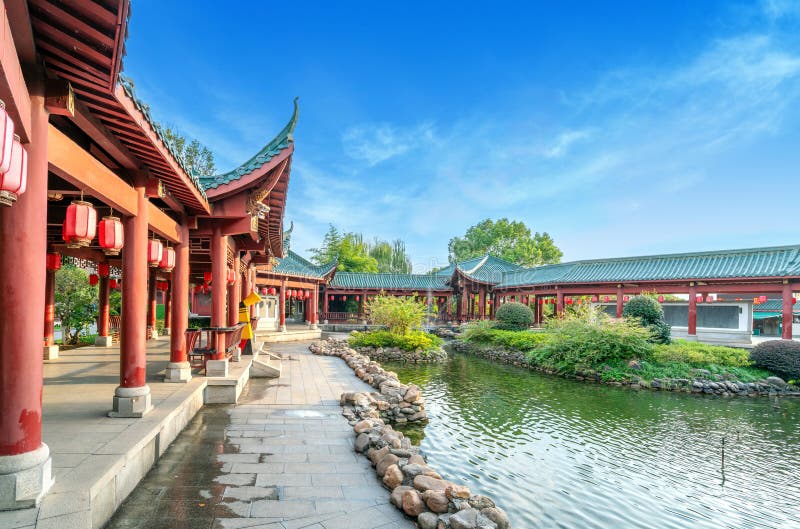
Yueyang Tower Junshan Island.
Legends of the Tower
The history of Yueyang Tower is interwoven with fascinating legends, particularly that of Lv Dongbin, a prominent figure in Tang Dynasty folklore. According to local lore, during the tower’s construction, the builders struggled with mortising the brackets essential for supporting the eaves. Lv, a wandering Taoist priest, promised to resolve the issue on the condition that his lodging and meals be paid. When the wealthy patron reneged on his agreement, Lv gifted him a wooden bolt with a prophetic warning: should the tower ever lean, the innkeeper would demand a high price for its salvation.
True to the legend, the tower began to lean, prompting the innkeeper to insert the bolt into the structure, thus saving it and earning his reward. This tale not only highlights the tower’s resilience but also exemplifies the intertwining of human actions and the forces of nature.
Junshan Island: A Natural and Cultural Gem
Just a stone’s throw from Yueyang Tower lies Junshan Island, a lush green paradise revered for its natural beauty and cultural significance. The island is famed for its Junshan Yinzhen Tea, a delicacy enjoyed both locally and internationally, showcasing the region’s rich agricultural heritage. Visitors can wander through serene groves of bamboo and tea plants, discovering small pavilions and ancestral temples that resonate with tranquility.
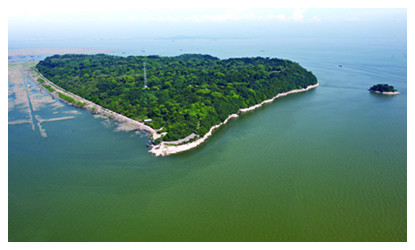
Yueyang Tower Junshan Island.
Moreover, Junshan Island is steeped in its own legends. One such tale recounts the transformation of wood shavings thrown into Dongting Lake into a silver-white fish, a mystical creature that symbolizes prosperity and abundance. This enchanting narrative adds another layer of allure to the island, making it a captivating destination for travelers seeking to immerse themselves in local folklore.
Celebrations and Traditions
The cultural significance of Yueyang and its surroundings is further highlighted during events like the annual Dragon Boat Festival. Held in honor of the revered poet Qu Yuan, who is said to have drowned himself in the Miluo River, this festival attracts visitors from all over, celebrating not only the legacy of Qu Yuan but also the vibrant spirit of the local community.
Conclusion
Visiting Yueyang Tower and Junshan Island offers more than just scenic views; it presents an opportunity to delve into a narrative rich with history, culture, and legend. Whether you are tracing the steps of poets, exploring the timeless architecture, or enjoying the natural beauty of the island, this UNESCO-recognized site invites you to experience the profound legacy of one of China’s most cherished landscapes.
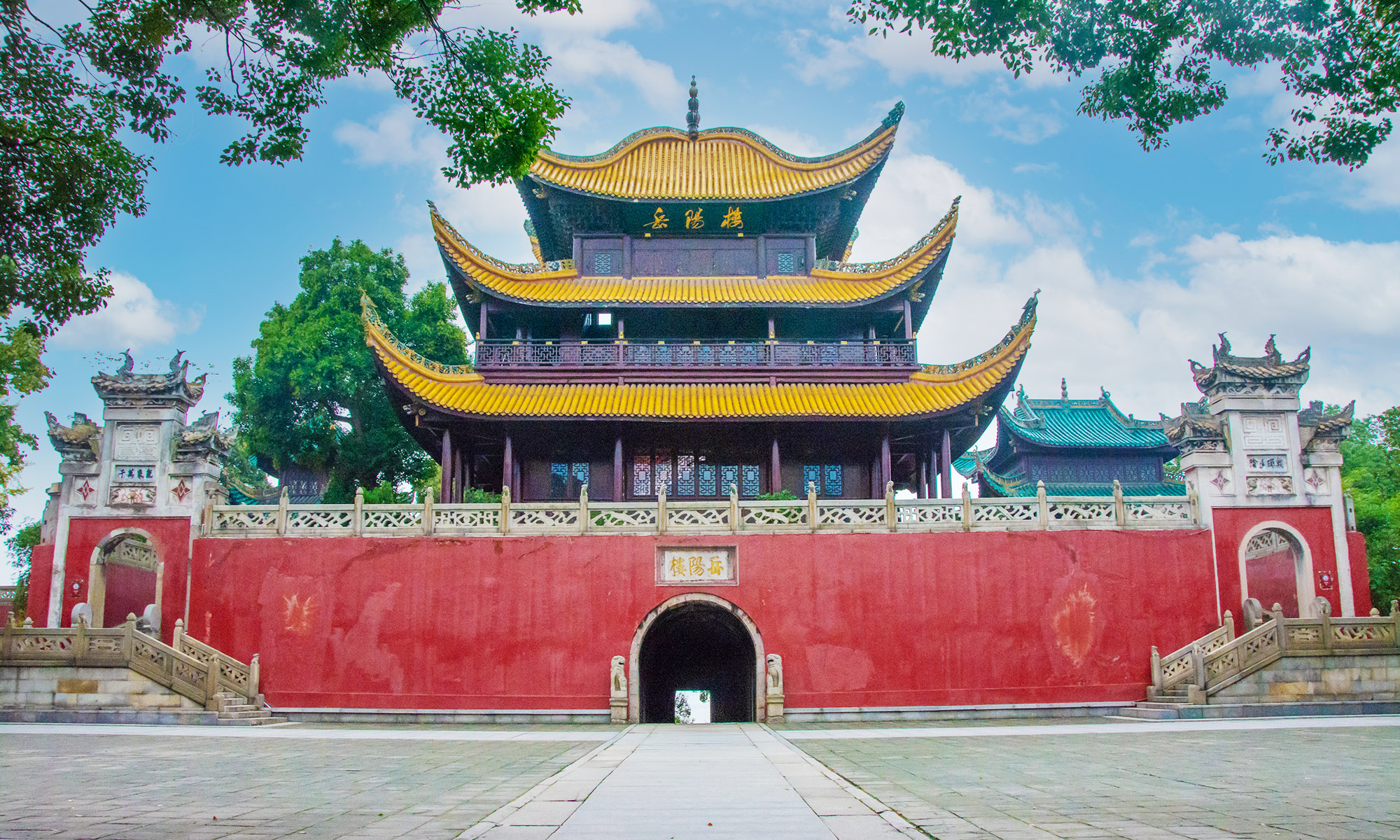
Yueyang Tower Junshan Island.
Main Highlights: What You Absolutely Can’t Miss
Discover the Unmissable Highlights of Yueyang Tower and Junshan Island
When exploring Yueyang, a city steeped in over 2,500 years of history, you will encounter a tapestry of cultural relics and breathtaking landscapes. Among the must-see attractions are the iconic Yueyang Tower and the enchanting Junshan Island, each offering a unique glimpse into China’s rich heritage.
Yueyang Tower (岳阳楼)
A Symbol of Architectural Marvel
– Location: Perched atop a hill at the western gate of the city, overlooking the vast expanse of Dongting Lake.
– History: Originally constructed in 716 A.D. during the Tang Dynasty, Yueyang Tower has been a site of inspiration for poets and scholars alike. Its current structure, rebuilt in 1045 during the Song Dynasty, showcases remarkable wooden architecture supported by only four grand pillars.
Cultural Significance
– Literary Legacy: The tower is immortalized in the works of famous poets like Du Fu and Li Bai, whose verses reflect the beauty of the surrounding landscape. Inside, you can admire stone tablets bearing their poems, connecting visitors to the literary giants of China’s past.
– Legends and Lore: The tower is steeped in folklore, including tales of the Taoist scholar Lv Dongbin, who is said to have performed miraculous feats during the tower’s construction.
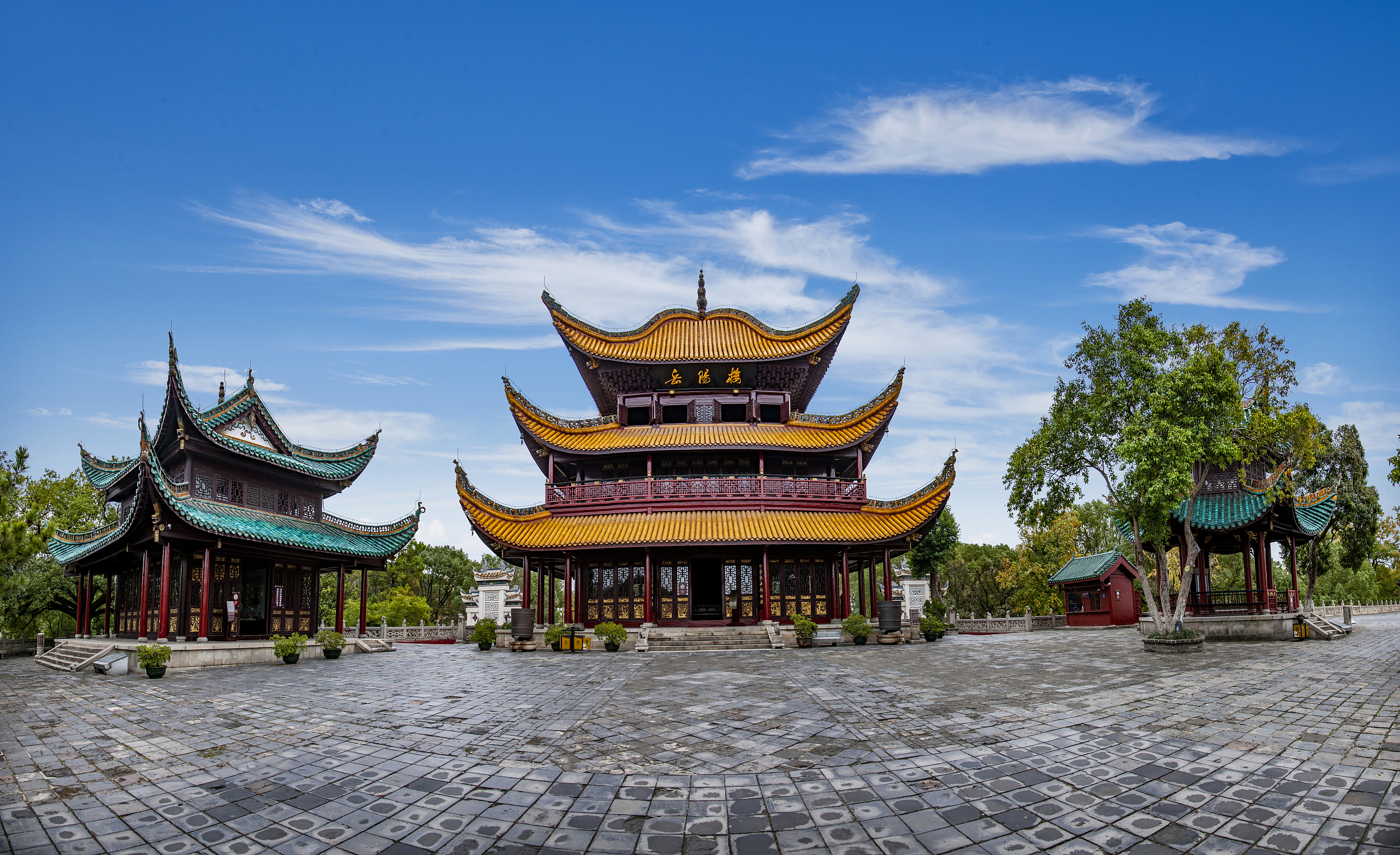
Yueyang Tower Junshan Island.
What to Explore
– Pavilions and Views: Flanking the tower are two charming pavilions – the “Drunk Three Times Pavilion” and the “Plum Pavilion,” both offering serene spots to appreciate the stunning lake views.
– Exhibits: The main hall features artifacts unearthed from the area along with poetic inscriptions that highlight the tower’s cultural importance.
Junshan Island (君山岛)
A Natural Oasis
– Location: Nestled within Dongting Lake, Junshan Island is a serene getaway that offers a contrast to the bustling city life.
– Flora and Fauna: The island is abundant with lush vegetation, including bamboo groves and tea plants. Its mild climate and rich soil contribute to the production of Junshan Yinzhen Tea, a prized green tea known for its delicate flavor.
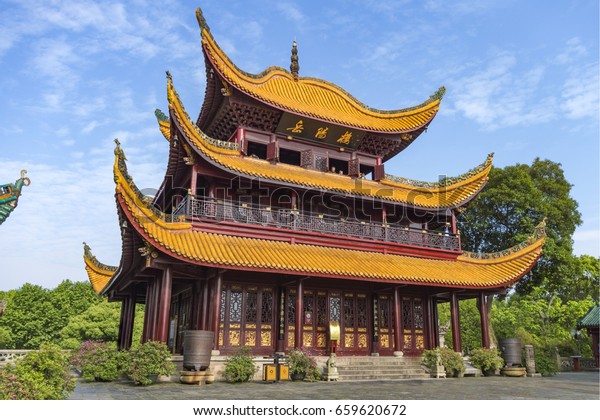
Yueyang Tower Junshan Island.
Cultural Treasures
– Historical Relics: Visitors can explore various ancestral temples and traditional pavilions scattered across the island, each reflecting the local architectural styles and cultural practices.
– Qu Yuan’s Legacy: Junshan Island is closely associated with the legendary poet Qu Yuan, who is celebrated annually during the Dragon Boat Festival with vibrant races along the Miluo River.
Activities
– Tea Experience: Don’t miss the chance to sample the renowned Junshan Yinzhen Tea. Engage with local tea farmers to learn about the cultivation and brewing techniques that have been passed down through generations.
– Scenic Strolls: Take leisurely walks along the island’s paths, enjoying the tranquil ambiance and stunning views of the lake, especially at sunset when the landscape transforms into a canvas of colors.
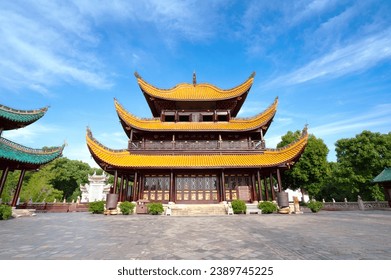
Yueyang Tower Junshan Island.
Dongting Lake (洞庭湖)
A Natural Wonder
– As the second-largest freshwater lake in China, Dongting Lake is a breathtaking sight that enhances the allure of both Yueyang Tower and Junshan Island. The lake’s expansive waters provide a picturesque backdrop, particularly at dusk when fishermen’s boats drift under the moonlight, creating a romantic atmosphere.
Final Thoughts
A visit to Yueyang Tower and Junshan Island is a journey through time, where history and nature intertwine to create an unforgettable experience. From the architectural splendor of the tower to the serene beauty of the island, these highlights are not just attractions; they are gateways to understanding the profound cultural heritage of China. Don’t miss the opportunity to explore these treasures on your next adventure!
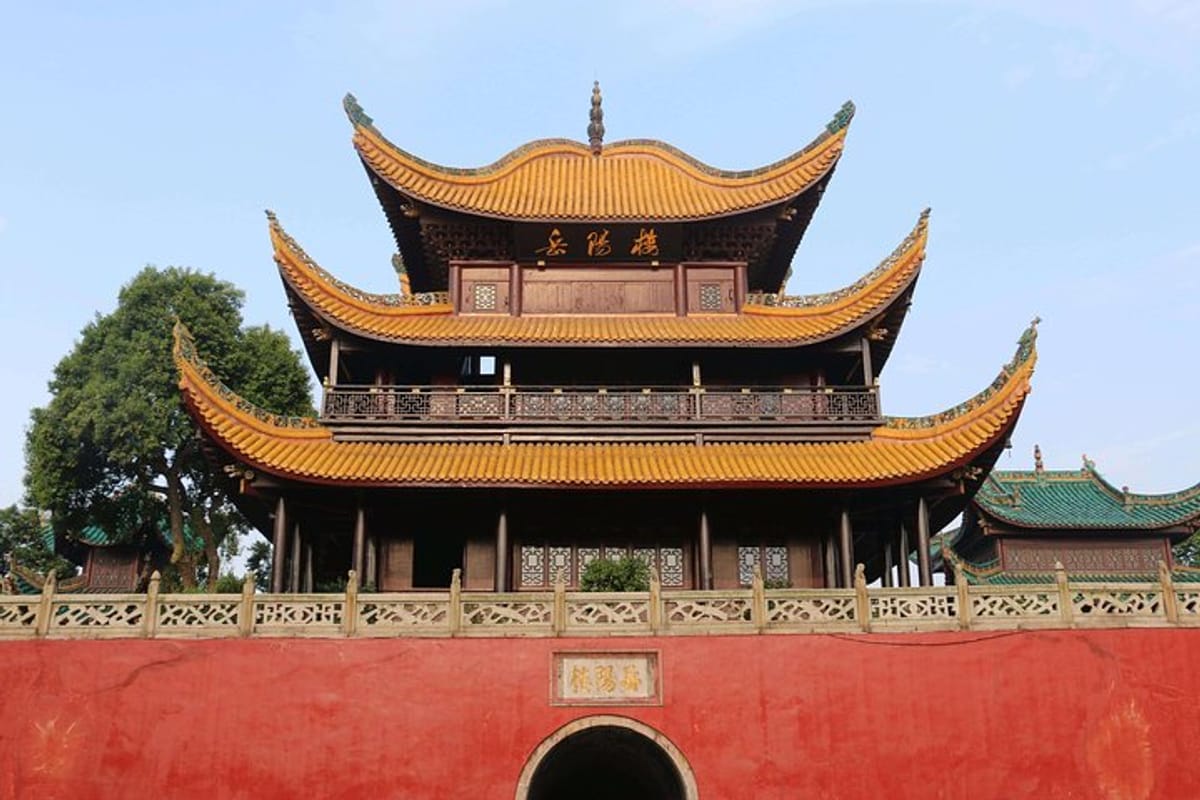
Yueyang Tower Junshan Island.
Planning Your Visit: A Practical Guide
Discovering Yueyang Tower and Junshan Island: A Practical Guide for Travelers
Yueyang, a city steeped in over 2,500 years of history, offers international travelers a unique glimpse into Chinese culture, particularly through its iconic attractions: Yueyang Tower and Junshan Island. This guide will help you plan your visit to these remarkable sites, ensuring you make the most of your exploration.
Getting There
Transportation Options:
-
By Air: The nearest airport is Yueyang Sanhe Airport (YZY), which is approximately 30 kilometers from the city center. Domestic flights connect Yueyang with major cities like Beijing and Shanghai. From the airport, taxis and ride-sharing services are readily available.
-
By Train: Yueyang is well-connected by train, with frequent services from major cities such as Wuhan and Changsha. The Yueyang Railway Station is located conveniently within the city, making it easy to reach your destination.
-
By Bus: Long-distance buses also serve Yueyang, providing another option for reaching the city from neighboring regions.

Yueyang Tower Junshan Island.
Best Time to Visit
Yueyang experiences a humid subtropical climate, characterized by hot summers and mild winters. The optimal time to visit is during spring (April to June) and autumn (September to November) when the weather is pleasant for outdoor activities and sightseeing.
Key Attractions
Yueyang Tower (岳阳楼)
-
Historical Significance: Originating in the Tang Dynasty (618-907 AD), Yueyang Tower is a masterpiece of ancient Chinese architecture. It has been rebuilt several times, with the current structure dating back to the Song Dynasty (960-1279 AD). The tower offers panoramic views of Dongting Lake and is a site of literary and historical importance.
-
Visitor Experience: Don’t forget to explore the surrounding pavilions, including the “Drunk Three Times Pavilion” and the “Plum Pavilion.” Poetry lovers will appreciate the inscriptions of works by renowned poets like Du Fu and Li Bai that adorn the tower’s walls.
Junshan Island (君山岛)
-
Natural Beauty: Located in Dongting Lake, Junshan Island is known for its lush landscapes filled with tea and bamboo. The island is renowned for producing Junshan Yinzhen Tea, which is celebrated both domestically and internationally.
-
Activities: Visitors can wander through various small pavilions and ancestral temples, enjoying the tranquil atmosphere. Take time to explore the local flora and fauna, including the unique Dongting Gold Tortoise, known for its medicinal properties.
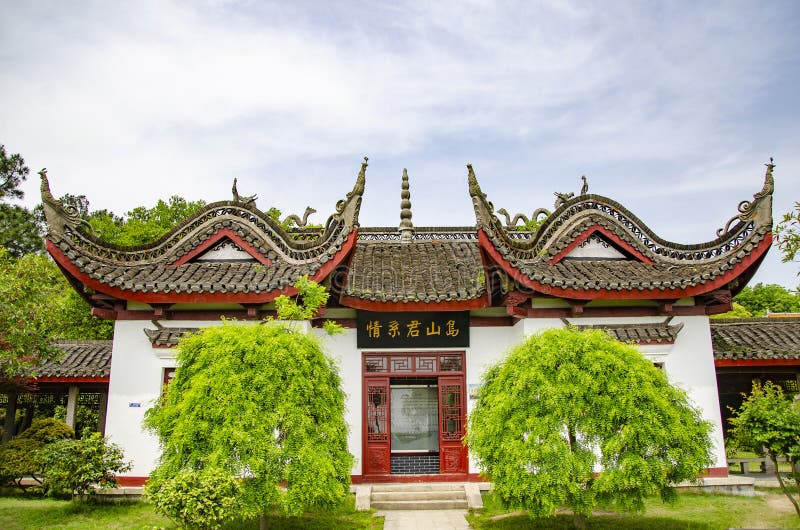
Yueyang Tower Junshan Island.
Cultural Experiences
-
Dragon Boat Festival: If your visit coincides with the Dragon Boat Festival (usually in June), participate in the lively celebrations along the Miluo River, which include thrilling dragon boat races in honor of the patriot Qu Yuan.
-
Local Cuisine: Don’t miss the opportunity to savor traditional Hunan dishes at local restaurants. The region is famous for its spicy flavors, so be prepared for an exciting culinary adventure.
Travel Tips
-
Language: While Mandarin is the official language, English may not be widely spoken. Learning a few basic Mandarin phrases can enhance your experience.
-
Currency: The local currency is the Chinese Yuan (CNY). It’s advisable to carry some cash for small purchases, although major credit cards are accepted in most establishments.
-
Respect Local Customs: When visiting temples and cultural sites, dress modestly and be mindful of local customs and traditions.
Accommodations
Yueyang offers a range of accommodations from luxury hotels to budget-friendly hostels. Consider staying near the city center for easy access to attractions, or choose a lakeside hotel for stunning views of Dongting Lake.
Conclusion
Yueyang Tower and Junshan Island are not just destinations; they are gateways to understanding the rich tapestry of Chinese history and culture. With this guide in hand, you’re well-prepared to explore these significant sites and experience the timeless beauty of Yueyang. Embrace the journey, and let the stories of the past enrich your travels.
Tickets: Prices, Booking, and Tips
Visiting the stunning Yueyang Tower and Junshan Island is a journey into China’s rich history and breathtaking landscapes. To ensure your experience is as seamless as possible, here’s what you need to know about ticket prices, booking, and useful tips for your visit.
Ticket Prices
- Yueyang Tower (Yueyang Lou):
- Standard Admission: Approximately ¥40 (CNY)
-
Discounted Admission: For students and seniors, tickets are often available at half price, around ¥20 (CNY). Always carry valid identification to avail discounts.
-
Junshan Island:
- Entry Fee: Generally around ¥30 (CNY).
- Boat Transfer: A boat ride to Junshan Island typically costs an additional ¥20 (CNY) each way. This scenic journey across Dongting Lake is a highlight in itself!
Booking Tickets
-
On-site Purchase: Tickets for both Yueyang Tower and Junshan Island can be purchased directly at the entrance. However, during peak tourist seasons (spring and fall), it’s advisable to arrive early to avoid long queues.
-
Online Booking: To bypass potential waiting times, you can also book tickets through various travel platforms or the official Yueyang tourism website. This option is particularly useful for those traveling in groups or during holidays.
-
Guided Tours: Consider joining a guided tour, which often includes transportation, entrance fees, and a knowledgeable guide who can enrich your understanding of the historical context of these sites. Many local travel agencies offer customizable packages.
Tips for Your Visit
-
Best Time to Visit: The ideal time to explore Yueyang Tower and Junshan Island is during the spring (March to May) and autumn (September to November). The weather is mild, and the scenery is particularly enchanting during these seasons.
-
Dress Comfortably: Wear comfortable shoes as you’ll be walking on uneven paths and climbing stairs, especially at Yueyang Tower. Dress in layers to accommodate the changing temperatures, particularly if you plan to stay for sunset views over Dongting Lake.
-
Cultural Etiquette: As these sites hold significant historical and cultural value, it’s respectful to maintain a quiet demeanor, particularly in areas of worship or during guided tours.
-
Photography: Bring your camera! Both locations boast stunning views, but be mindful of local regulations regarding photography, especially in more sacred or restricted areas.
-
Local Delicacies: Don’t miss out on trying Junshan Yinzhen tea, known for its delicate flavor, which you can purchase on Junshan Island. Local restaurants also serve a variety of Hunan dishes that are both spicy and flavorful, perfect for a post-visit meal.
Conclusion
With its rich blend of history, architecture, and natural beauty, a visit to Yueyang Tower and Junshan Island promises a memorable experience. By planning ahead with the above ticket information and tips, you will be well-prepared to immerse yourself in one of China’s cultural gems. Enjoy your journey!
How to Get There: A Complete Transportation Guide
Your Journey to Yueyang Tower and Junshan Island
Embarking on a journey to Yueyang, particularly to visit the renowned Yueyang Tower and the picturesque Junshan Island, is an experience steeped in history and natural beauty. Below is your comprehensive guide to getting there, covering various transportation options to make your travel seamless and enjoyable.
Arrival in Yueyang
By Air:
The nearest airport to Yueyang is Yueyang Sanhe Airport (YYA), which is approximately 30 kilometers (about 18 miles) from the city center. This airport serves several domestic flights, particularly from major cities like Beijing, Shanghai, and Guangzhou.
- From the Airport to Downtown Yueyang:
- Taxi: The most convenient option is to take a taxi, which takes about 40 minutes and costs around 100-150 RMB (approximately $15-23).
- Airport Shuttle: Look for the shuttle bus service that connects the airport to the city center. This is a cost-effective option, with tickets priced around 20 RMB (approximately $3).
By Train:
Yueyang is well-connected by train, making it easy to reach from various cities across China. The main railway station, Yueyang Railway Station, is located about 3 kilometers (1.8 miles) from the city center.
- High-Speed Train: If you’re traveling from cities like Wuhan or Changsha, high-speed trains are available and provide a comfortable and quick journey. The travel time from Changsha is approximately 1 hour, while from Wuhan, it takes about 2 hours.
- Local Transport from the Station:
- Taxi: Taxis are readily available outside the station, making it a quick option to reach your accommodation or attractions.
- Public Bus: Several bus lines operate from the railway station to various parts of the city for those on a budget.
By Bus:
Long-distance buses connect Yueyang with nearby cities and provinces. The Yueyang Long-distance Bus Station serves as the main hub for intercity travel.
- From Changsha or Wuhan: Buses from these cities run frequently, with a travel time of around 2-3 hours, depending on traffic conditions. Ticket prices typically range from 50-80 RMB (approximately $8-12).
Exploring Yueyang: Getting to Yueyang Tower and Junshan Island
Once in Yueyang, visiting both Yueyang Tower and Junshan Island is a must. Here’s how to get to each:
Yueyang Tower:
– Location: Situated in the city center, the Yueyang Tower is easily accessible.
– Walking: If you’re staying nearby, it’s a pleasant walk to the tower, allowing you to soak in the local atmosphere.
– Taxi or Ride-Hailing Services: A short taxi ride from any central hotel will get you there in under 10 minutes.
Junshan Island:
– Access by Boat: The island is located in Dongting Lake and can only be reached by boat.
– Departure Point: Head to the Dongting Lake wharf, which is about 5 kilometers (3 miles) from the city center.
– Boat Services: Regular ferries operate from the wharf to Junshan Island. The journey takes about 30 minutes and costs around 30 RMB (approximately $5).
– Private Boat Tours: For a more personalized experience, consider booking a private boat tour that might include guided commentary on the island’s rich history and natural beauty.
Tips for a Smooth Journey
- Language: While many signs are in English, learning a few basic Mandarin phrases can enhance your experience.
- Cash vs. Mobile Payments: While larger establishments accept credit cards, many local vendors prefer cash. Mobile payment apps like WeChat Pay and Alipay are widely used as well.
- Local Cuisine: Don’t miss out on the local delicacies available near Yueyang Tower and the ferry terminal to Junshan Island. Sampling local dishes adds a delicious layer to your cultural exploration.
In conclusion, reaching Yueyang Tower and Junshan Island is a straightforward process, with various transportation options available to suit every traveler’s needs. Whether you’re arriving by air, train, or bus, your adventure into the heart of Chinese history and culture awaits!
Local Cuisine and Accommodation Nearby
Exploring the enchanting Yueyang Tower and the serene Junshan Island is sure to work up an appetite, and the local cuisine offers a delightful way to immerse yourself in the region’s rich cultural heritage. In this section, we’ll guide you through some of the must-try dishes and recommend accommodations that will enhance your experience in this historical part of China.
Local Delicacies to Savor
1. Junshan Yinzhen Tea (君山银针)
Renowned for its delicate flavor and fragrant aroma, this green tea is a specialty of Junshan Island. The tea buds are hand-picked during the early spring and are known for their silky texture. Enjoy a cup while soaking in the tranquil surroundings of Dongting Lake.
2. Dongting Lake Fish (洞庭湖鱼)
The waters of Dongting Lake are teeming with fresh fish, making it a staple in local cuisine. Dishes like steamed fish with ginger and scallions are popular and highlight the fresh flavors of the lake.
3. Hunan Spicy Cuisine (湖南菜)
Known for its bold flavors and spiciness, Hunan cuisine features a variety of dishes that make use of fresh ingredients. Try the Spicy Fish Head Stew or Stir-Fried Pork with Green Peppers for a true taste of local culinary culture.
4. Pickled Vegetables (腌菜)
A traditional accompaniment to many meals, Hunan pickled vegetables are tart and flavorful, providing a perfect balance to the richness of the main dishes.
5. Junshan Island Tofu (君山豆腐)
Local tofu, made with pure spring water from the island, has a unique texture and taste. It is often served in a hot pot or stir-fried with seasonal vegetables.
Where to Stay
After a day of exploration, unwind at one of the nearby accommodations that offer both comfort and convenience.
1. Yueyang Tower Hotel (岳阳楼大酒店)
Located just a stone’s throw from Yueyang Tower, this hotel provides stunning views of Dongting Lake and is perfect for travelers who want to immerse themselves in local culture. The hotel features modern amenities and an on-site restaurant serving Hunan cuisine.
2. Junshan Island Resort (君山岛度假酒店)
For those looking to stay on Junshan Island, this resort offers a unique experience. Surrounded by lush greenery and tea plantations, guests can enjoy peaceful walks and partake in tea tastings right from the source.
3. Dongting Lake International Hotel (洞庭湖国际酒店)
Set along the shores of Dongting Lake, this hotel combines luxurious accommodation with breathtaking views. It features a variety of dining options, including local specialties, and is well-suited for both leisure and business travelers.
4. Sunshine Hotel (阳光酒店)
A budget-friendly option located near the city center, Sunshine Hotel offers comfortable rooms and easy access to local attractions. It’s a great base for exploring the rich history and vibrant culture of Yueyang.
Conclusion
With a rich array of local dishes and comfortable accommodations, your visit to Yueyang Tower and Junshan Island will be both memorable and deeply satisfying. Whether you’re sipping on Junshan Yinzhen tea or indulging in a spicy Hunan feast, the flavors of this region are sure to leave a lasting impression.
Frequently Asked Questions
Frequently Asked Questions about Yueyang Tower and Junshan Island
1. What is the historical significance of Yueyang Tower?
Yueyang Tower, originally built during the Tang Dynasty in 716 A.D., is a renowned architectural marvel that has inspired poets and historians alike. It was constructed near the site where the Viscount of Ba buried his soldiers after battles with the State of Chu. The tower has undergone multiple reconstructions and holds deep cultural importance, featuring poems from famous poets such as Du Fu and Li Bai.
2. How do I get to Junshan Island?
Junshan Island is accessible via boat rides from Yueyang City. Visitors can catch a ferry from the Dongting Lake area, which regularly operates services to the island. The journey offers picturesque views of Dongting Lake, making it a delightful experience.
3. What can I expect to see on Junshan Island?
The island is rich in both natural beauty and cultural heritage. Visitors can explore small pavilions, ancestral temples, and ancient wells. Junshan Island is also famous for its lush bamboo groves and tea plantations, particularly the highly regarded Junshan Yinzhen tea. Additionally, the unique Dongting Gold Tortoise can be spotted here, known for its medicinal properties.
4. Is there an entrance fee to visit Yueyang Tower and Junshan Island?
Yes, there is typically an entrance fee for both Yueyang Tower and Junshan Island. The fees may vary depending on the season and specific activities, such as guided tours or special events. It’s advisable to check the latest information before your visit.
5. Are there any guided tours available?
Yes, several local travel agencies offer guided tours of Yueyang Tower and Junshan Island. These tours often provide in-depth historical insights and cultural context, enriching your experience. Be sure to inquire about options in advance to secure your spot.
6. What is the best time to visit Yueyang Tower and Junshan Island?
The ideal time to visit is during spring (March to May) and autumn (September to November) when the weather is mild and the natural scenery is at its most beautiful. Visiting during the Dragon Boat Festival, which commemorates the poet Qu Yuan, can also enhance your experience with cultural festivities.
7. Are there dining options available on Junshan Island?
Yes, Junshan Island features several local restaurants and tea houses where visitors can sample regional cuisine, including dishes made from local ingredients. Enjoying a cup of Junshan Yinzhen tea while overlooking the picturesque lake is a must-do experience.
8. What should I wear when visiting Yueyang Tower and Junshan Island?
Dress comfortably and wear suitable footwear for walking, especially if you plan to explore the island’s natural landscapes. Depending on the season, layers are recommended, as temperatures can vary throughout the day. Don’t forget to bring sun protection and a camera to capture the stunning views!
Final Thoughts on Your Trip
As your journey through the enchanting landscapes of Yueyang and the storied realms of Yueyang Tower and Junshan Island draws to a close, you’ll find yourself enriched by the layers of history and culture that permeate this remarkable destination.
A Tapestry of History and Nature
Standing atop the wooden marvel of Yueyang Pavilion, you can almost hear the echoes of poets and scholars who once roamed these grounds. The breathtaking views of Dongting Lake, coupled with the historical significance of the pavilion, create an atmosphere that stirs the soul and ignites the imagination.
Junshan Island, with its lush tea gardens and tranquil pavilions, offers a serene escape into nature’s embrace. As you sip on the famed Junshan Yinzhen tea, you’ll appreciate the craftsmanship and tradition that go into each delicate cup. The island’s rich biodiversity, including the rare Dongting Gold Tortoise, adds to the allure, reminding you of the delicate balance between nature and culture.
A Cultural Mosaic
From the poignant legacy of Qu Yuan, whose spirit still resonates during the vibrant Dragon Boat Festival, to the intricate architecture of ancient villages like Zhang Guying, Yueyang is a treasure trove for those eager to delve into China’s profound cultural tapestry. The stories embedded in every stone, every wave of the lake, invite you to reflect on the past while embracing the present.
Final Reflections
As you prepare to depart from Yueyang, take a moment to reflect on your experiences. The warmth of the local hospitality, the allure of age-old stories, and the captivating beauty of the landscapes will linger in your memory long after you leave.
Whether you are a history enthusiast, a nature lover, or a seeker of authentic cultural experiences, Yueyang offers a journey that transcends time. Carry with you the spirit of this remarkable locale, and let it inspire your future travels. Until we meet again, may your adventures continue to unfold with the same richness and wonder you found here.